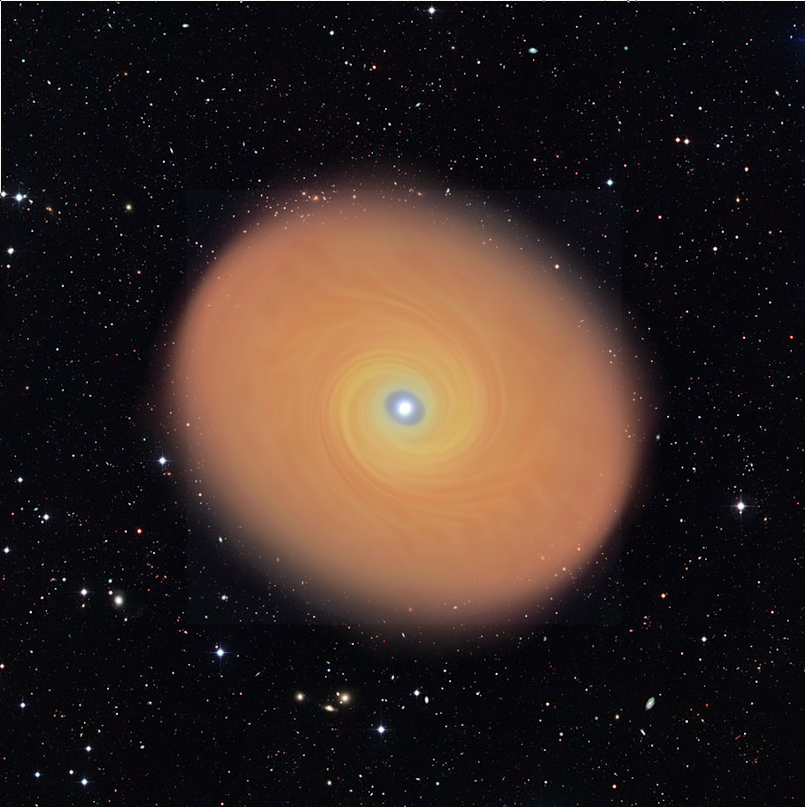Circumstellar Discs
Classical theories of star formation assume that a rotating, collapsing cloud will form a disc, through which the star will accrete matter. This has been confirmed observationally for low-mass stars but remains more elusive for their higher-mass couterparts. At Leeds we aim to explore the difference between the two regimes in a number of ways.
Around Massive Young Stellar Objects
In one approach we focus on Massive Young Stellar Objects (MYSOs), young stars still embedded in their natal cloud and undergoing accretion. We use observations at near-infrared wavelengths (λ~2 microns) to understand the environments of these objects.
Through studying certain spectral lines (such as Fe or CO lines) we can understand the properties of the accretion process, as such lines are expected to be formed in an accretion disc. In addition, looking at hydrogen recombination lines allows us to derive the rates at which the accretion process takes place. The results can be compared with values for lower-mass sources giving hints about the similarities between high- and low-mass young stellar objects.
As well as studying MYSOs at near-infrared wavelengths, we also use high-resolution observations at longer wavelengths to trace the colder material in the disc further from the young star. Millimetre-wavelength facilities such as the Atacama Large Millimeter/submillimeter Array (ALMA) can detect the dust particles which are mixed with gas in the disc, and also detect spectral lines emitted from the molecules in the gas. The doppler shift of these lines from their expected observed wavelength can then inform us about the kinematics of the gas in the disc. For instance, they can tell us whether the disc spins up as the gas gets closer to the forming star.
Using the high-resolution interferometry capabilities of ALMA, and the Northern Extended Millimeter Array (NOEMA), Leeds aims to find discs around the hot, massive O-type stars and to parametrise themi, comparing their properties to those around low-mass forming stars. A recent success of these efforts was the recent discovery of a Keplerian disc around O-type star AFGL 4176 (see image) [1].
The full press releases for the discovery are available here and here.
[1] Johnstone, K.G. et al. 2015,ApJL, 813, L19
Around Herbig Stars

